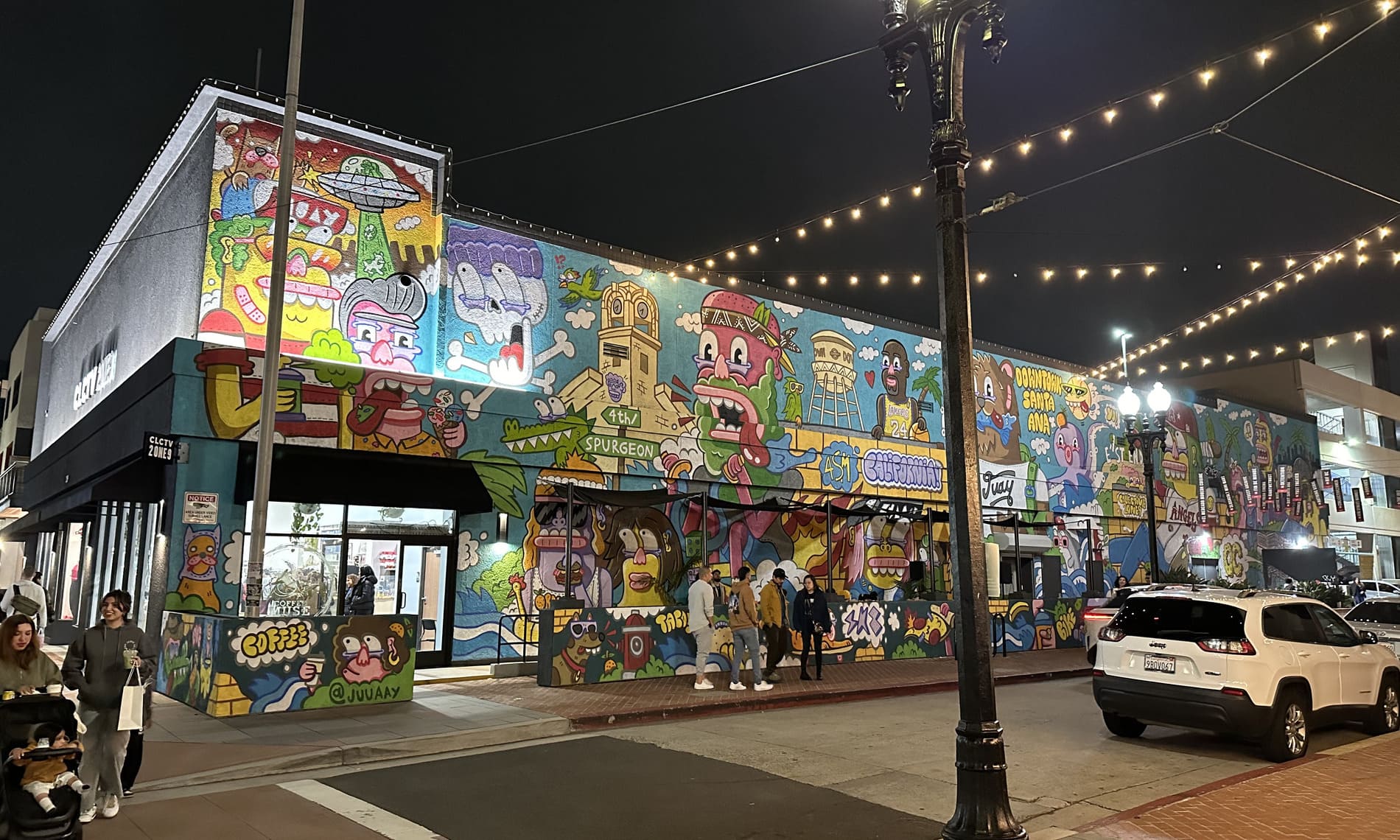Street art, including murals, calligraffiti, and installations, is a powerful tool in regenerating and revitalizing urban areas. Beyond its aesthetic appeal, street art provides a platform for community empowerment and cultural expression, while bringing new life to spaces that have been overlooked or marginalized. In this blog post, we will explore the ways street art has played a crucial role in regenerating neglected urban environments, particularly in downtown Santa Ana, California (DTSA).
Empowering Communities and Stimulating Economic Growth
Street art often involves local artists collaborating with communities to create pieces that resonate with the area’s identity. In downtown Santa Ana, vibrant murals by local artists continue the rich tradition that started in Santa Ana in the 1960’s, when local Chicano artists began celebrating the city’s multicultural history with large, colorful murals. The personal connection between local artists, the city, and the community’s identity reflected in the artwork empowers residents and fosters a sense of ownership over their public spaces. Community members are not just passive observers but active contributors to the revitalization process.

Open mic night in DTSA at a building covered in murals
Economic Impact
The transformation brought about by street art can attract attention and visitors. This increased foot traffic can lead to economic benefits for local businesses. Cafes, galleries, and shops in once-neglected neighborhoods may experience a revitalization of their own as people are drawn to the area to experience the vibrant street art scene. This has been the case in downtown Santa Ana, and can be seen in community events like the DTSA First Saturday Artwalk that began in 1999.
At the same time as local economies experience a boost from enlivened aesthetics and artistic activity, property values also rise. While this is a positive outcome for those with the economic means to benefit, it also makes the neighborhood unaffordable to long-time local residents and contributes to gentrification. Unfortunately, downtown Santa Ana has been no stranger to this complex phenomenon as well.
Inspiring Creativity and Innovation
The presence of street art can inspire creativity and innovation within the community. As individuals interact with the art on a daily basis, it fosters a mindset of thinking outside the box and embracing unconventional ideas. This creative energy can extend beyond art into various aspects of community development.
Conclusion
Street art, with its ability to engage communities, celebrate culture, stimulate economic growth, address social issues, attract tourists, and inspire creativity, has proven to be a catalyst for revitalizing neglected urban areas. As cities continue to evolve, recognizing the transformative power of street art becomes crucial in creating inclusive, vibrant, and culturally rich urban spaces.




